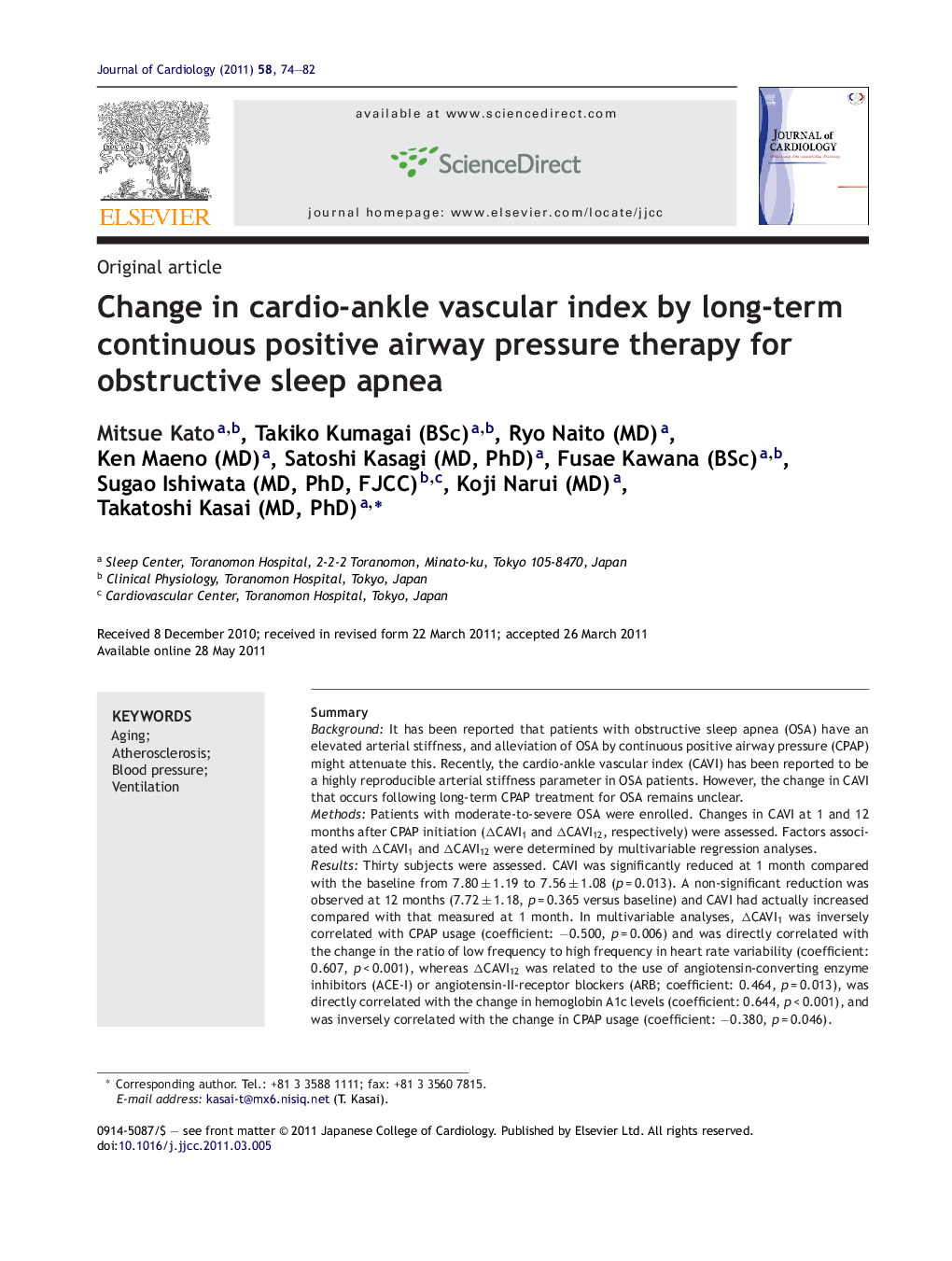| Article ID | Journal | Published Year | Pages | File Type |
|---|---|---|---|---|
| 2963396 | Journal of Cardiology | 2011 | 9 Pages |
SummaryBackgroundIt has been reported that patients with obstructive sleep apnea (OSA) have an elevated arterial stiffness, and alleviation of OSA by continuous positive airway pressure (CPAP) might attenuate this. Recently, the cardio-ankle vascular index (CAVI) has been reported to be a highly reproducible arterial stiffness parameter in OSA patients. However, the change in CAVI that occurs following long-term CPAP treatment for OSA remains unclear.MethodsPatients with moderate-to-severe OSA were enrolled. Changes in CAVI at 1 and 12 months after CPAP initiation (ΔCAVI1 and ΔCAVI12, respectively) were assessed. Factors associated with ΔCAVI1 and ΔCAVI12 were determined by multivariable regression analyses.ResultsThirty subjects were assessed. CAVI was significantly reduced at 1 month compared with the baseline from 7.80 ± 1.19 to 7.56 ± 1.08 (p = 0.013). A non-significant reduction was observed at 12 months (7.72 ± 1.18, p = 0.365 versus baseline) and CAVI had actually increased compared with that measured at 1 month. In multivariable analyses, ΔCAVI1 was inversely correlated with CPAP usage (coefficient: −0.500, p = 0.006) and was directly correlated with the change in the ratio of low frequency to high frequency in heart rate variability (coefficient: 0.607, p < 0.001), whereas ΔCAVI12 was related to the use of angiotensin-converting enzyme inhibitors (ACE-I) or angiotensin-II-receptor blockers (ARB; coefficient: 0.464, p = 0.013), was directly correlated with the change in hemoglobin A1c levels (coefficient: 0.644, p < 0.001), and was inversely correlated with the change in CPAP usage (coefficient: −0.380, p = 0.046).ConclusionsCAVI was significantly reduced by short-term CPAP and then slightly increased from 1 to 12 months, which was probably due to natural progression associated with the aging process. However, long-term CPAP treatment had the beneficial effect of maintaining CAVI below baseline levels when associated with the use of ACE-I/ARB, the control of blood glucose and the CPAP compliance.
